How to Make an Old Mac Fast Again 2008
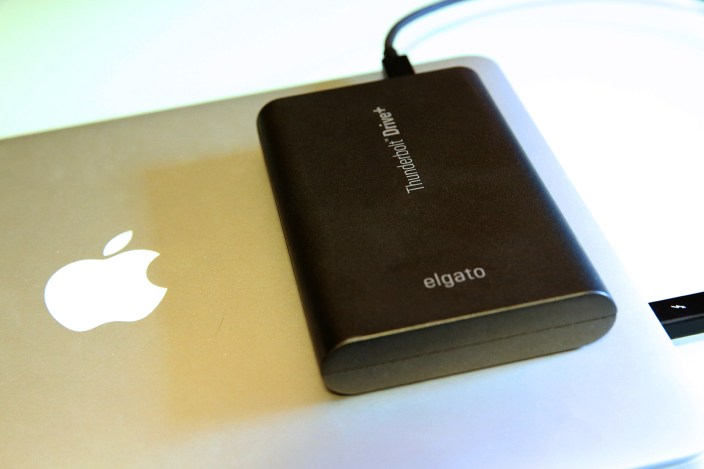
My Mac is now silent. After installing a solid country bulldoze (SSD) with no moving parts, the drone of my iMac'southward difficult drive and fans has given way to such an absence of audio that I only hear the loftier-pitched squeal of my office lights.
My Mac is now fast. Even with 400GB of available space, OS 10 Yosemite'due south constant difficult bulldoze accessing had brought my quad-core, 3.4GHz Core i7 automobile to its knees. Now I'm seeing five times the hard drive speeds, apps are loading instantly, and my iMac feels as responsive as the MacBooks and iPads that shell it to the SSD game.
Last week, buoyed by (finally!) reasonable SSD prices and a desire to try a DIY project, I walked through the steps to replace a prior-generation iMac's difficult drive with an SSD. Similarly excited readers take pointed out that older MacBooks and certain other Macs are also easy to upgrade… just at least 1 Mac (surprise: the Mac mini) is non. And then below, I'll show you some great SSD options that you can install yourself, inquire a tech-savvy friend/repair shop to handle for yous, or choose as external solutions.
The Big Picture
It'south hard to believe, but dorsum in 2008, Apple tree offered a 64GB solid country drive upgrade to the original MacBook Air for a whopping $1,300 premium over the laptop's normal cost. At that time, a consumer 1TB drive cost around $4,000, and Apple wasn't even attempting to sell one.
A lot has inverse fifty-fifty over the past year. SSDs are faster, more reliable, and a lot more affordable. Today, excellent quality SSDs showtime at $60 (120GB), climbing to $120 (250GB), $231 (500GB) and $420 (1TB) — notwithstanding not as cheap as traditional drives, just improve. The Samsung 850 EVO I installed in my iMac is 5 times faster than the 1TB hard disk it replaced and has no moving parts, so information technology'southward tiny, silent and cooler-running. Information technology also has a five-twelvemonth warranty and a longer expected lifespan than nigh difficult drives; if yous're willing to pay more than, the 850 PRO version has a x-year warranty that eclipses all only the almost expensive enterprise-class desktop hard disks.
Internal or External?
Although operation will vary based on the specific Mac you're upgrading with an SSD, Macs released over the past 5 years will likely see bigger gains if yous supersede their internal hard drives rather than adding SSDs equally external drives. A new SSD inside an older iMac, MacBook, Mac mini, or Mac Pro will lead to much faster Os 10 performance, app loading, restarting, and file accessing. Only if y'all buy an external SSD and connect it using something faster than USB 2 or FireWire 800 — say, a spare Thunderbolt or USB 3 port — you'll see definite speed improvements for whatever files and apps you place on the SSD.
My personal advice would be to consider an internal solution, if possible following a DIY hard drive replacement guide like the ones linked below. If you lot're concerned about damaging your Mac during the replacement process, you tin opt to have a tech-savvy friend or local Apple repair shop handle the SSD replacement for you. And if you prefer an external bulldoze — and don't mind cutting the performance benefits downwards somewhat — there are some good, though more expensive options below.
MacBook/MacBook Pro: Internal + External SSD Options
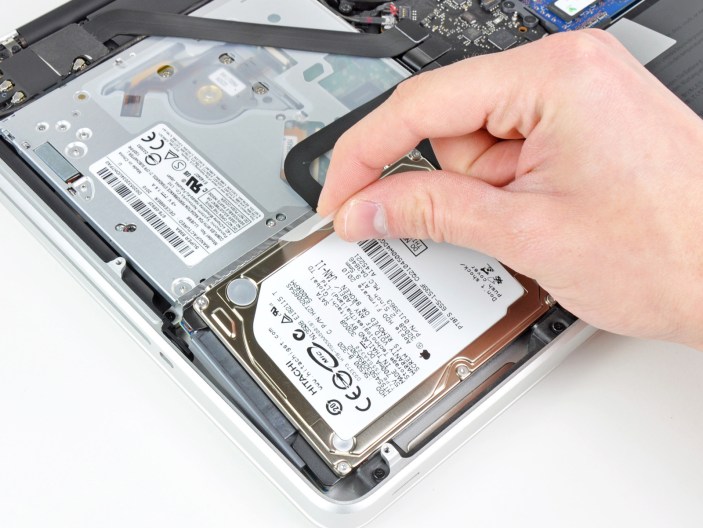
courtesy iFixit
Aluminum-bodied MacBooks and MacBook Pros made in 2012 or earlier can be upgraded with 2.5″ internal SSDs, including the Samsung 850 EVO I advisedly selected for my iMac. Every bit shown in these iFixit guides (MacBook Pro 13″ 2009 / 2010 / 2011 / 2012, and MacBook Pro xv″), the process requires little more one Torx T6 screwdriver, 1 Philips #00 screwdriver, and a flat-head screwdriver (or spudger) to accomplish. It's even easier for the short-lived 2008 metal MacBook, which has a pop-off bottom panel for easier hard drive replacement.
Replacing the hard bulldoze of the unibody MacBook Pro requires only a handful of steps: backing up your old drive (preferably using Time Automobile), removing the bottom cover of your MacBook using Torx screwdrivers, removing the hard drive, replacing it with the SSD, and then reattaching the bottom cover. For a variety of reasons, information technology's even easier than the iMac hard bulldoze swap I discussed in my prior commodity, and all you need is the screwdriver, the SSD, and the confidence to do it yourself.

If you're going to exercise an internal hard drive swap, there's pretty widespread agreement that theSamsung 850 EVO ($sixty-$420) I previously recommended offers a superb combination of speed, reliability, and quality for the cost. It has a 4.7/5-star rating on Amazon, versus the 850 Pro, which sells for more than ($98-$555) and has a 4.8/5-star rating. Past contrast, the virtually pop portable external SSDs right now are Samsung's new USB 3.0-based T1 (250GB/$174, 500GB/$300, 1TB/$569, shown to a higher place), with four.5/v-star ratings. If you're willing to spend quite a scrap more than and have a free Thunderbolt port, Elgato's Thunderbolt Drive+ (256GB/$425, 512GB/$780) has Thunderbolt and USB 3.0/ii.0 interfaces.
Mac mini: Internal + External SSD Options
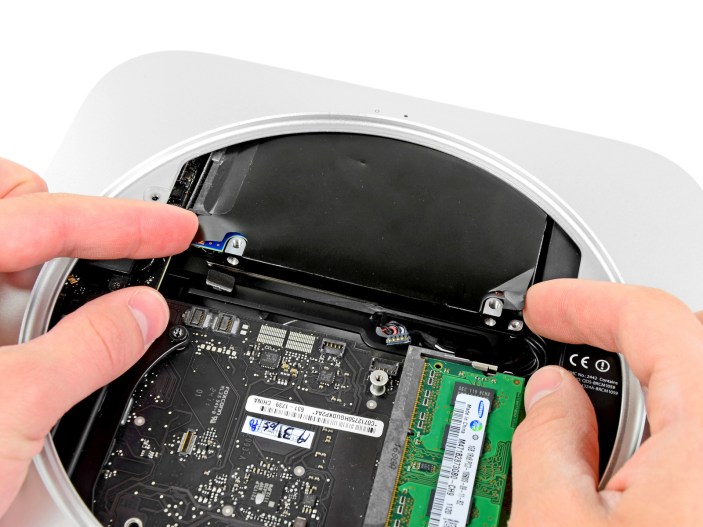
courtesy iFixit
Internal SSD replacement for the 2010 to 2014 "unibody" Mac mini requires considerably more than effort and skill than doing so for the MacBooks and iMacs. You'll need to disassemble the Mac mini's chassis, fan, and antenna plate before disconnecting the logic board and hard drive — with steps that get even more than challenging on the virtually recent 2014 models. My proposition would be to leave an internal drive upgrade of this model upwards to a professional.

The same sort of 2.5″ internal drives can be used in the Mac mini equally on the other Macs. While the 2010 Mac mini limits y'all to FireWire 800 or USB 2.0 — probably non worth the endeavor of calculation an external SSD — the 2011 model has a Thunderbolt port, and the 2012 version has USB 3.0 ports, making external SSDs easier to add. If USB iii.0 is an option, go with Samsung's T1 (250GB/$174, 500GB/$300, 1TB/$569). Thunderbolt-only users can consider Elgato'southward professional-course Thunderbolt Bulldoze+ SSDs, which simply dropped in price: OWC offers them for $368/256GB or $628/512GB. Covered in aluminum housings and fully port-powered, these drives are the rare SSDs with a Thunderbolt interface, also including USB 3.0 and two.0 compatibility. They accept rare 5/5-star ratings on Amazon, where their prices are significantly college (256GB/$425, 512GB/$780).
Mac Pro: Internal + External SSD Options
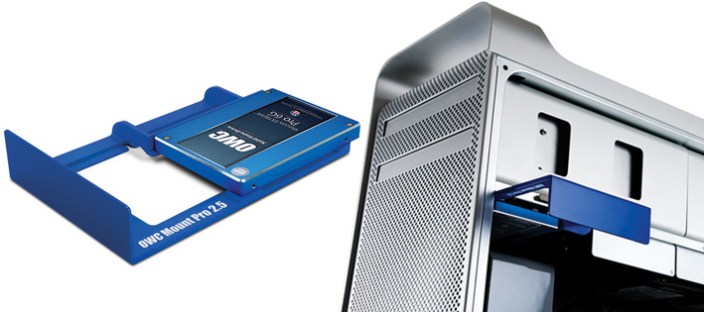
Electric current-generation Mac Pros send with large, fast SSDs, making replacements highly unlikely for the fourth dimension being, but first-generation Mac Pros tin definitely benefit from the speed increase. As iFixit's guide notes, the process of installing a new drive is as simple as flipping a rear latch, pulling the Mac'south side panel and hard drive bay out, then using a Philips head spiral driver to attach a hard drive sled to your new drive.
But with an SSD, there's another stride: you'll need a 2.5″ to three.five″ hard drive adapter bracket such as NewerTech'southward AdaptaDrive ($15) to mount the tiny SSD inside a large hard drive bay. The visitor also sells the OWC Mountain Pro (now merely $18), which lets you mount the SSD on a custom-fit replacement for the Mac Pro's difficult drive bay. This is an easier solution, and the ane I'd choice if installing an SSD in the Mac Pro.
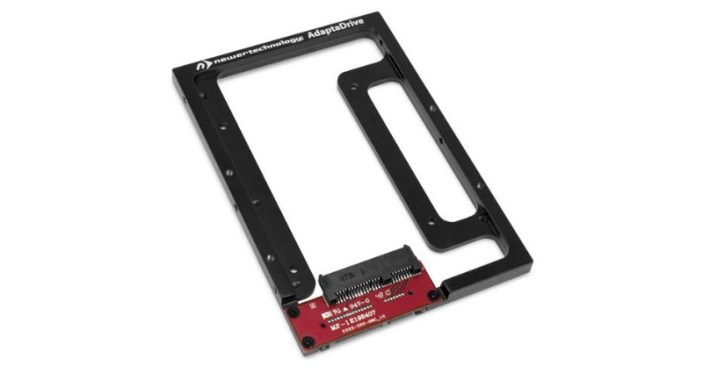
The Mac Pro'southward physical size and multi-drive-ready internal architecture get in an ideal candidate for an internal SSD. If you're considering an external bulldoze, you might want to call up again. The built-in, outdated USB 2.0 and FireWire 800 ports aren't going to cut it, and users take reported very mixed experiences calculation USB 3.0 cards — somewhat better results with more expensive ones such as Caldigit's FASTA-6GU3 Pro — to this computer. My advice would be to stick with an internal solution.
iMac: Internal + External SSD Options

I've discussed the iMac in much greater detail in my prior article, only the internal and external SSD recommendations are basically the aforementioned as for the MacBook Pro: theSamsung 850 EVO ($sixty-$420), Samsung 850 Pro ($98-$555), Elgato Thunderbolt Drive+ ($368/256GB, $628/512GB), or Samsung T1 (250GB/$174, 500GB/$300, 1TB/$569).
All Macs: Preserving Your Software (If You're Replacing An Internal Bulldoze)
Preparing your Mac'south quondam internal hard bulldoze to be replaced is pretty easy. Y'all can run a complete Time Machine fill-in to an external bulldoze (preferably one that'due south connected with a cable rather than over Wi-Fi), or complicate the process somewhat past using a complete drive cloning app.
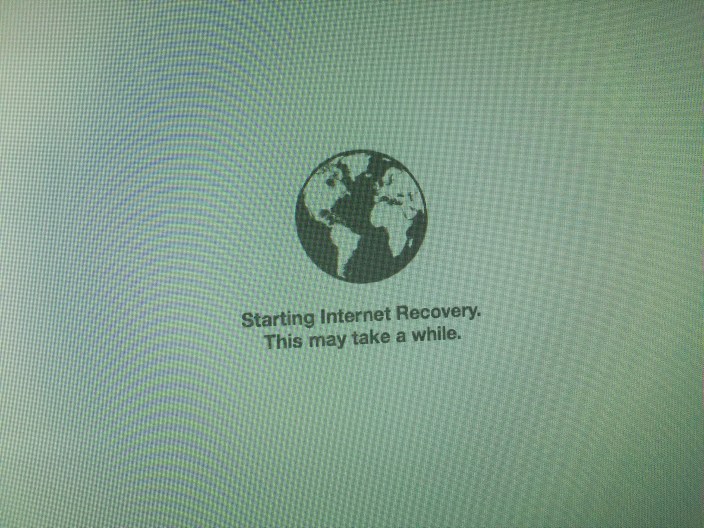
In my stance, going the Time Machine route is a better thought when starting fresh with an SSD, and information technology costs nothing. After backing the drive up, you lot only turn off and unplug your iMac, swap the drives, so concord Control-R downwards on the keyboard when get-go restarting your Mac. Whatever recent version of OS X will kicking into Internet Recovery mode, enabling you to use Deejay Utility to format the SSD (choose Mac Extended + Journaled), so restore directly from your Time Machine fill-in. The restoring process will take hours, simply you'll come back to a fresh installation of OS X with everything pretty much as it was left on your quondam drive.

If you want to go the more complex route, you tin social club this $13 (reg. $16) USB 3.0 to 2.five″ SATA III Adapter Cable, connect it to your iMac and SSD before opening upward the machine, and run SuperDuper or Carbon Re-create Cloner to transfer the old drive's contents to the new bulldoze. This volition let you start using your iMac right away after the drive is swapped, without waiting hours for Time Auto, and for ameliorate or worse pretty much guarantees that every 1 of your files (and potentially plenty of cruft) will be exactly where it was before.
Should y'all desire to swap an optical drive for an SSD, or add together an SSD to a Mac Pro'southward empty drive bay, nil needs to be done to prep software beforehand. Backing upwards your Mac is always a proficient idea before opening information technology upward, but all you lot'll need to practice afterwards the SSD installation is run Bone X'south Disk Utility and format the new drive.
What About Trim?
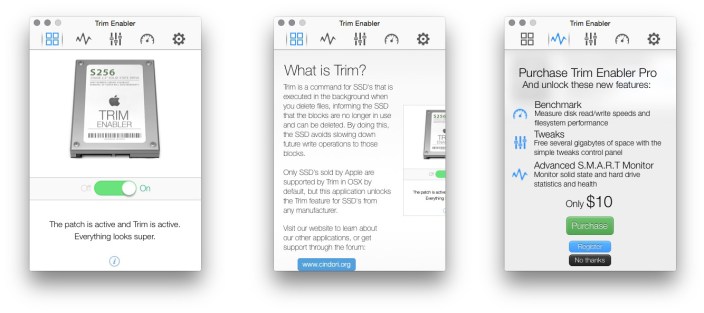
A number of readers accept asked about Trim support for third-party SSDs, a topic that's both important and potentially somewhat confusing. Trim — automated recycling of SSD space freed upwards by deleting files — is a background chore performed by your Mac. It's handled in the background by Os X, though for reasons unknown, Apple tree more often than not provides Trim support only for its ain drives.
Cindori's free application Trim Enabler (Pro version $10) enables Trim support for third-party SSDs under Bone X, including the latest ten.x.ii and 10.10.3 versions. Please annotation, notwithstanding, that Trim Enabler must be turned off each time you do a OS X system update (say, from 10.10.2 to 10.10.3); if you forget, you'll see a gray box when the machine tries to reboot after an update, and you'll need to follow these instructions to brand the automobile work properly again.
Conclusions
Whichever option you choose for your Mac will yield meaning dividends. With an internal drive, 3X to 5X speed improvements across apps and other files are typical with SSDs of the caliber recommended in a higher place; using an external drive will deliver a nice improvement for whatever files y'all store on it. In that location's no meliorate (or more than price-constructive) way to speed up an onetime Mac today.
FTC: We use income earning motorcar affiliate links. More.
Check out 9to5Mac on YouTube for more Apple news:
Source: https://9to5mac.com/2015/02/16/macbook-mac-mini-mac-pro-ssd-swap/
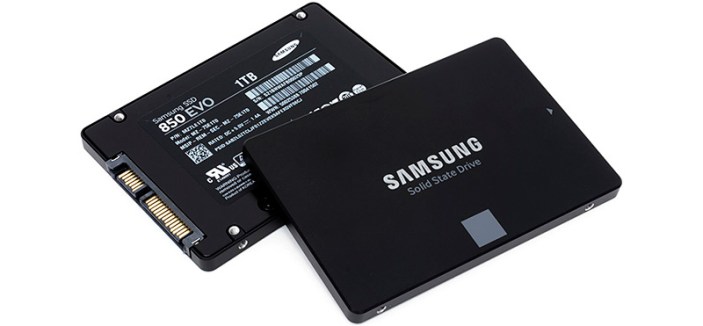
0 Response to "How to Make an Old Mac Fast Again 2008"
Post a Comment